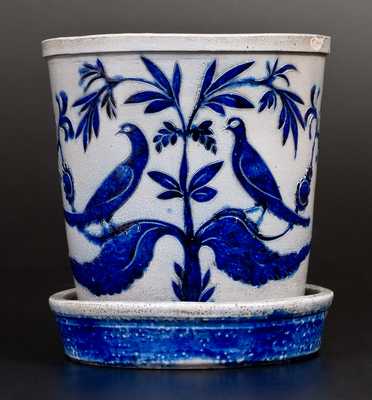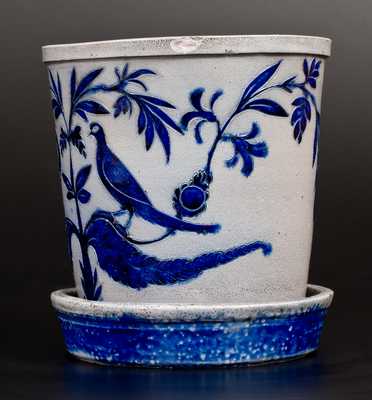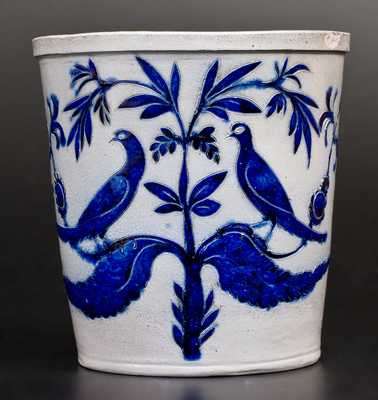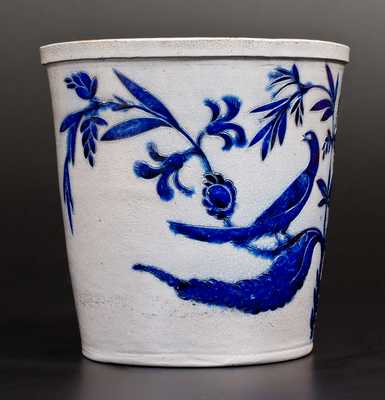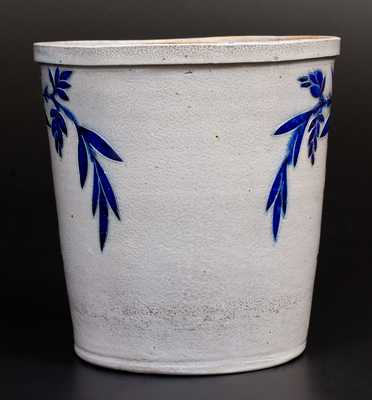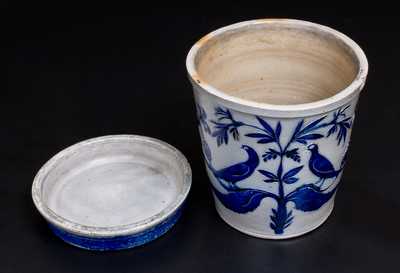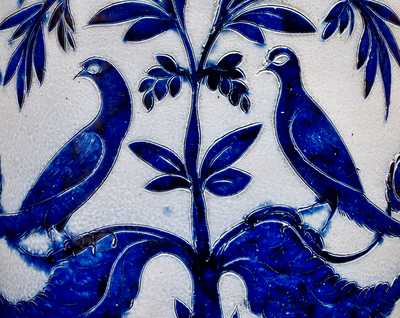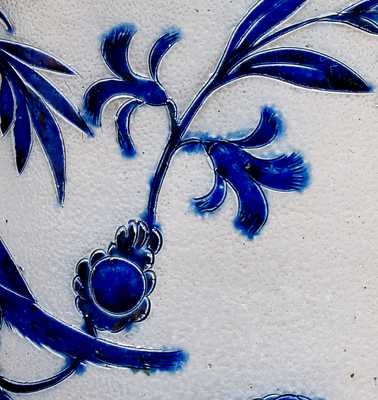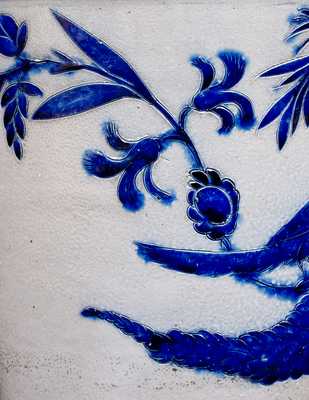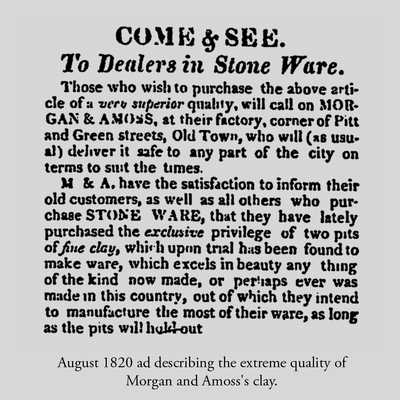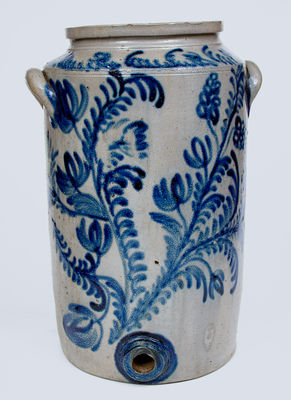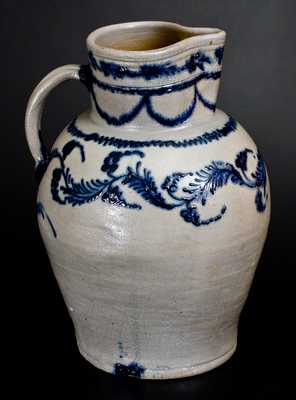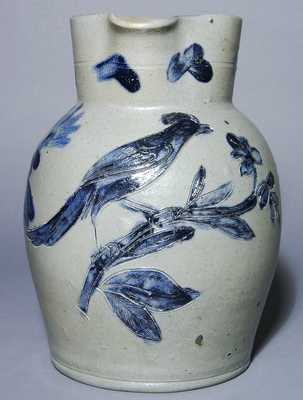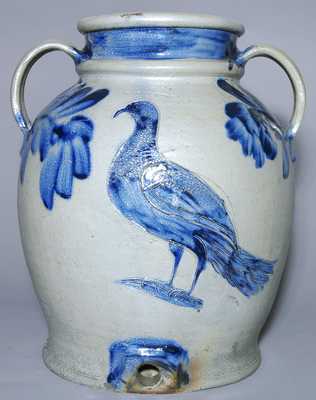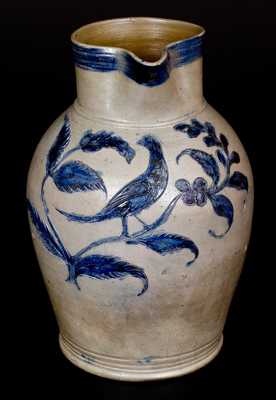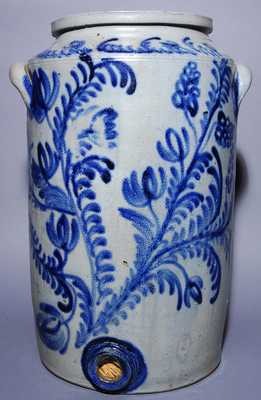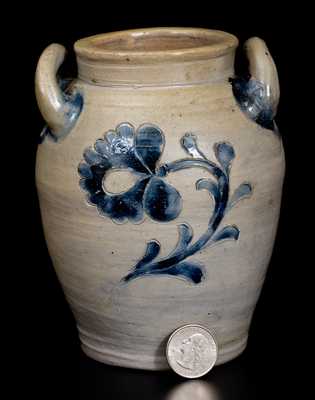Exceedingly Rare and Important Stoneware Flowerpot with Profuse Incised and Cobalt-Highlighted Bird and Floral Decoration, attributed to William Morgan, Baltimore, MD, circa 1820-1825, tapered flowerpot with squared rim, lavishly-decorated with an incised and cobalt-highlighted design of birds perched on the stems of a flowering plant. The decoration features crisp incising throughout, including hollowed eyes and upswept tails to birds, large scallop-edged leaves, daisies, splayed flowers with frayed tips, and hanging cluster-shaped blossoms. This design, which extends around both sides of the flowerpot to the reverse, is delicately-filled with brushed cobalt slip. Remarkably, the flowerpot includes its original saucer, which features a tooled rim and cobalt-decorated surface.
This astounding recent discovery is closely-related to two other Morgan bird-decorated pieces: the first, a cooler bearing the signature, "Morgan Maker / Balt.", the second a pitcher in the collection of the Museum of Early Southern Decorative Arts in Winston-Salem, North Carolina, previously owned by museum founder, Frank Horton.
Interestingly, the few known incised Morgan stoneware objects parallel the work of the New-York-trained potters, Henry Remmey and Henry Harrison Remmey, who were active in Baltimore, circa 1812-1829. The flowerpot offered in our July auction shares similarities with a damaged and reconstructed example, which was made by one of the Remmeys and recovered from a Baltimore privy in the early 2000s. See Zipp, "Henry Remmey & Son, Late of New York: A Rediscovery of a Master Potter's Lost Years," Ceramics in America 2004, fig. 17-18). Despite the Remmeys notoriety for incised decoration in Manhattan, Baltimore, and Philadelphia, it appears that William Morgan's work may have actually advanced this decorative treatment even further.
Indeed, incised ornamentation of this profusion and decorative quality is known only among a few other outstanding pieces of American stoneware. Based on comparisons of this object with other 19th century American examples of the form, both in stoneware and redware, it could easily be argued that this work is the finest American ceramic flowerpot known. Its surviving condition, even including its original saucer, is exemplary, a testament to the care it received during use nearly two-hundred years ago. Provenance: Recently discovered in Maryland. Flowerpot in remarkable, excellent condition with a shallow 7/8" rim chip and minor nick to rim. The saucer survives in excellent condition with only a small chip to base. H (of flowerpot, excluding saucer) 7 3/8" ; H (of flowerpot, including saucer) 7 7/8". Diameter (of flowerpot at opening) 7 1/2" ; Diameter (of saucer) 7 1/4".

